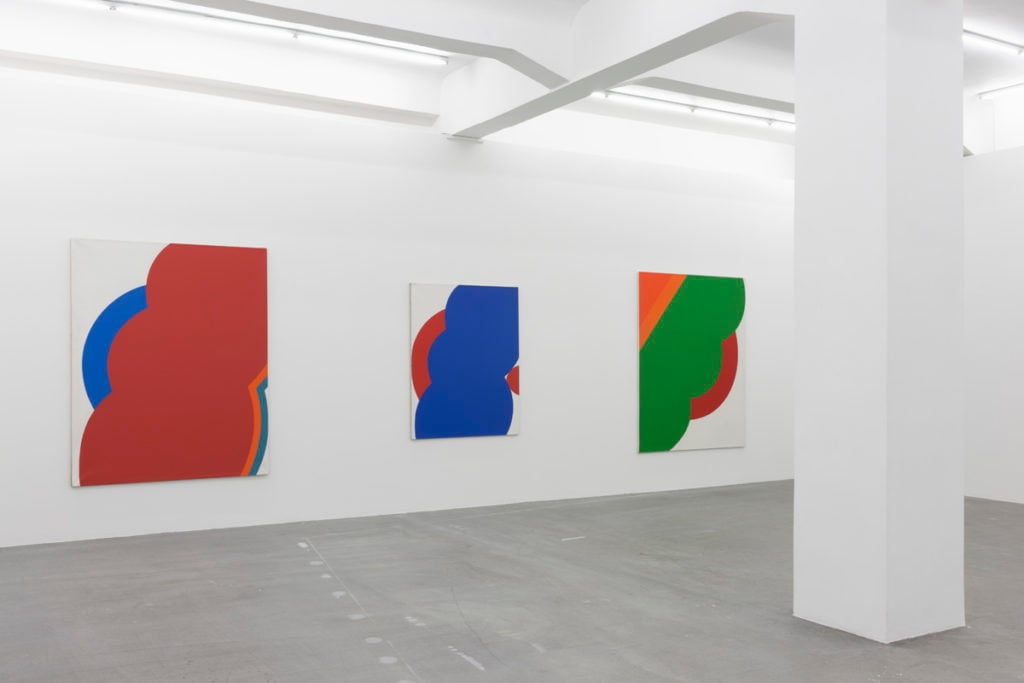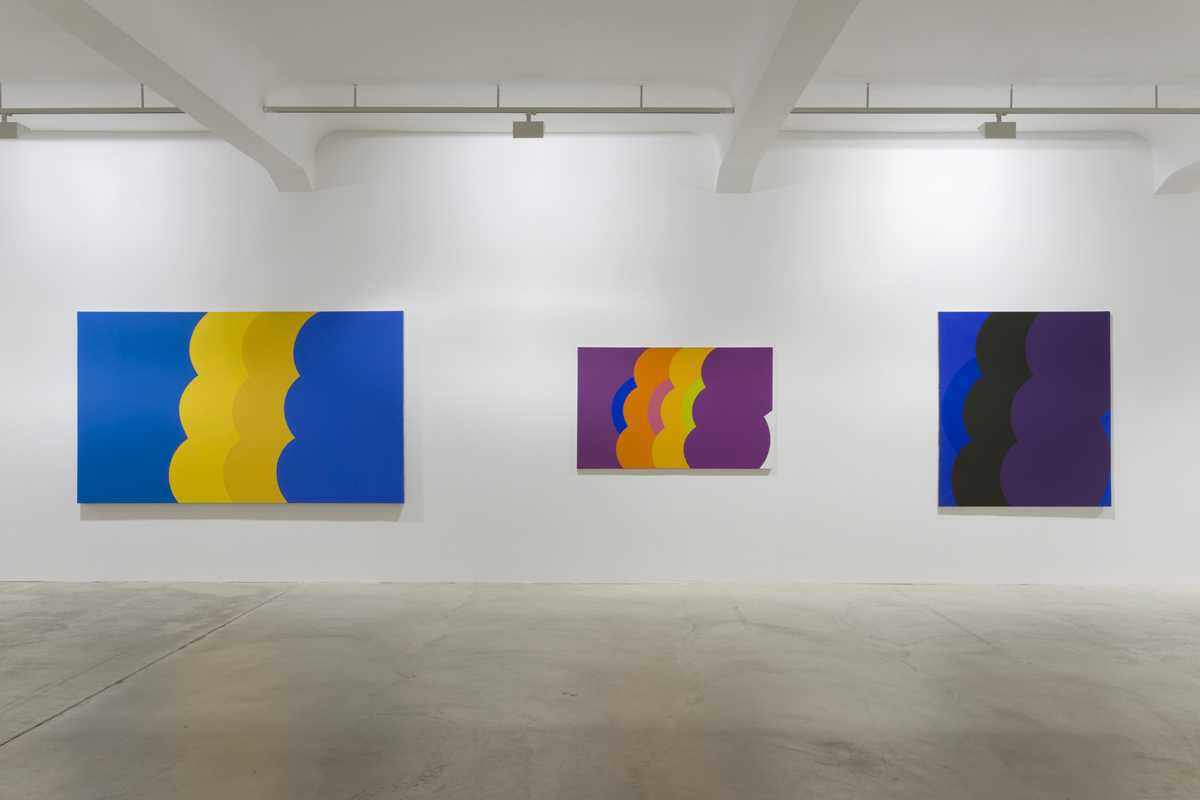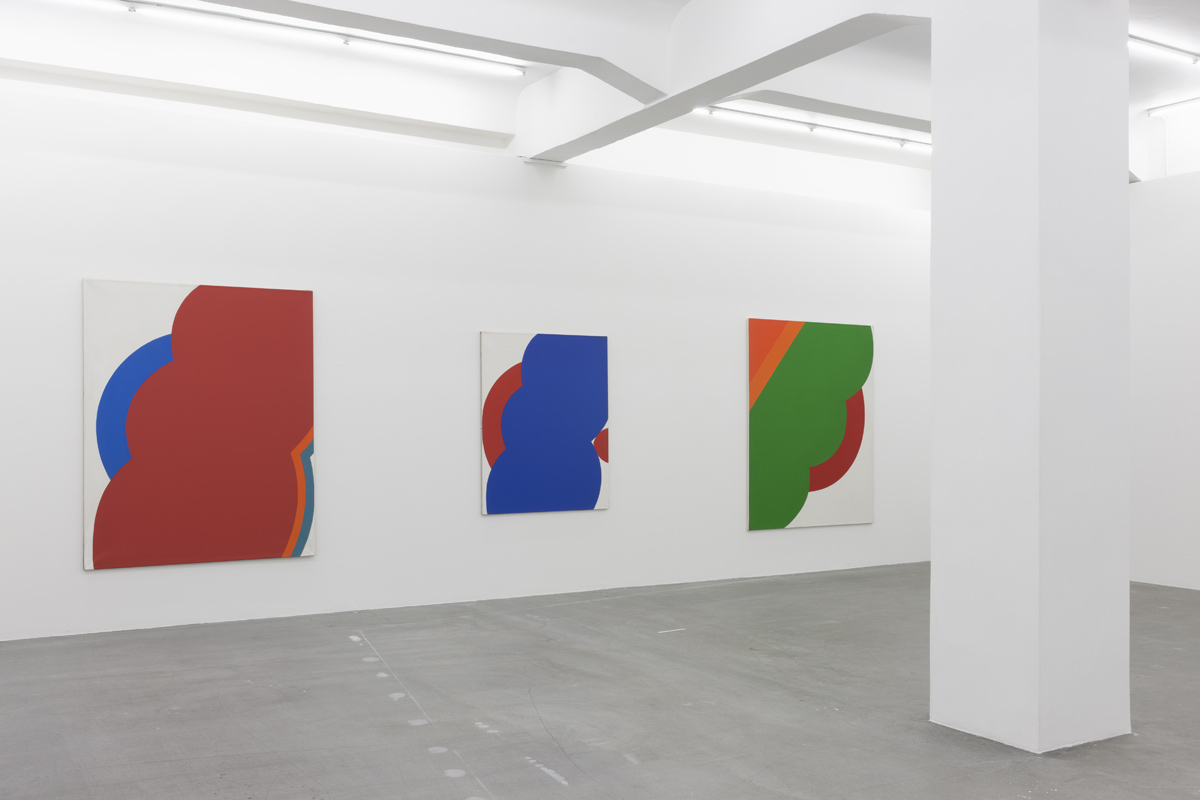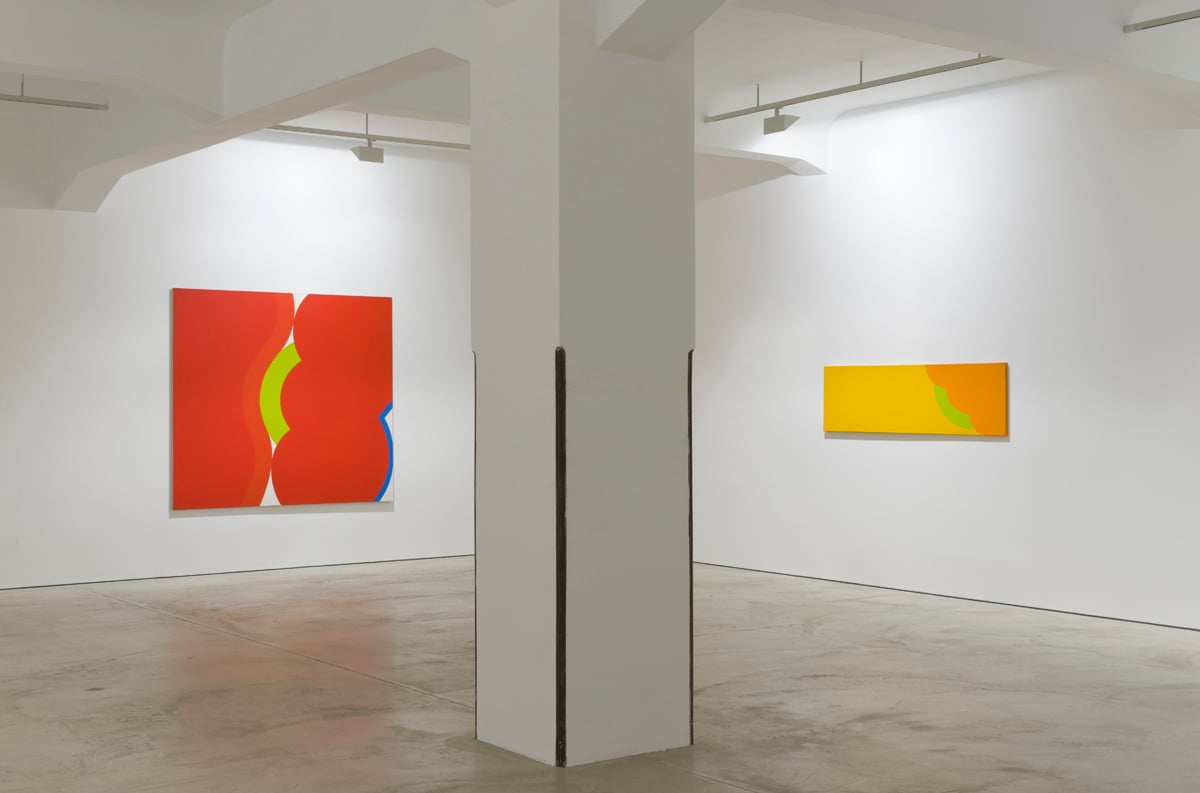Art & Exhibitions
Georg Karl Pfahler, the Hard-Edge Painter the Market Forgot
We review the first-ever show of the late painter's Tex series in Berlin.

We review the first-ever show of the late painter's Tex series in Berlin.

Hendrik Hansson


Installation View, Georg Karl Pfahler, The Tex Series, Galerie Crone, Berlin
Photo: Courtesy Galerie Crone
Currently on view at Berlin’s Galerie Crone, 25 canvasses by Germany’s only Hard-Edge artist, the late Georg Karl Pfahler dazzle. The exhibition marks the first time Pfahler’s Tex series has been exhibited separately from other works. Painted between 1962 and 1974, the works were sourced from several private collections as well as the artist’s estate.
As opposed to the more angular, square forms prominent in much of the rest of Pfahler’s oeuvre, the Tex series is characterized by rounded forms. The use of rounded shapes softens the relationship between the hard edges and intense color and offers the viewer a much more congruent visual experience compared to many other works painted by the artist. When viewing Nocturn Tex (1964-1970), the eye glides gently over the canvas. Complementary colors and the sparse use of white contribute to the harmonious feel and allow interrelations of Pfahler’s chosen hues to come to the fore.
Despite the non-representational subject matter in Pfahler’s art, his works are not void of political and social influences. The early Tex paintings materialized shortly after the assassination of John F. Kennedy, an event which greatly occupied Pfahler. The name Tex is derived from Texas, the place of the American president’s assassination. The rounded forms can therefore be interpreted as a visual representation of the consequences or ramifications of world changing or life-changing events, the shapes are deliberately ambiguous so that the interpretation remains unique and personal to the viewer. Uni Tex (1963-1965), the earliest Tex painting shows a red orb penetrating the contrasting blue shape beside it, indicative of the bullet that penetrated Kennedy’s head. The red bow on the opposite side, illustrates the effect of the assassination. As time progressed the shapes in late works in the Tex series became looser and more rounded, Drei Tex GOB, 1970 illustrates how the paintings became more minimalistic and simplified.

Installation View, Georg Karl Pfahler, The Tex Series, Galerie Crone, Berlin
Photo: Courtesy Galerie Crone
Born in 1926, Pfahler studied at the Kunstakademie Stuttgart under Willi Baumeister, graduating in 1954. Although his teacher significantly influenced Pfahler’s early work, experimentation with different techniques including ink drawing and collage led to the gradual simplification of his paintings. In 1962 early signs of block-like forms on crisp backgrounds emerged on Pfahler’s canvasses. Eventually he further reduced his style to focus primarily on shapes as a means to explore interrelations between colors.
In the 1960’s and 1970’s Pfahler enjoyed considerable success. His paintings were exhibited domestically and internationally to great critical acclaim: among them, Signale, in Basel in 1965 and Formen der Farbe in 1967 in Amsterdam, Stuttgart, and Bern cemented his place on the world stage. Pfahler was invited to represent Germany at the 1970 Venice Biennial alongside Heinz Mack and Günther Uecker. The trio went on to show at the São Paulo Biennial in 1981.
Yet all too soon thereafter, the art world’s attention shifted focus. As the neo-expressionist movement based around Baselitz, Polke and Richter began to take hold in Germany in the late 1980s and 1990s, Pfahler’s popularity slowly began to wane. Recently, his contemporaries from the Zero Group have experienced major market resurgences. However, twelve years after his death, Pfahler remains relatively unknown, under-appreciated and undervalued.
Pfahler’s dogged pursuit of the hard-edge style in opposition to the prevalent trends that dominated the visual arts during his lifetime make him one of the most unique German artists of the last half century. His work remained steadfastly focused on the interplay of space, shape and color. At the same time, the work contains traces of pop and minimal art, unifying two of the most prevalent styles of the 1960s. Turo Tex (1966), for example, contains all these characteristics, the minimalistic shapes combined with different shades of pink, red and blue arranged in a flat, two-dimensional manner.
For its dynamism, Pfahler’s work remains more relevant and, indeed, perhaps even more contemporary than much of the art being shown and hyped today. The political and social critique located within the paintings has staying-power. It’s a fact that is picking up curatorial attention as well. In the past year, new works have been purchased by Frankfurt’s Städel Museum and Berlin’s Nationalgalerie (currently exhibited at the Neue Nationalgalerie), among other institutions. Simply put: Pfahler’s return to prominence is long overdue.

Installation View, Georg Karl Pfahler, The Tex Series, Galerie Crone, Berlin
Photo: Courtesy Galerie Crone